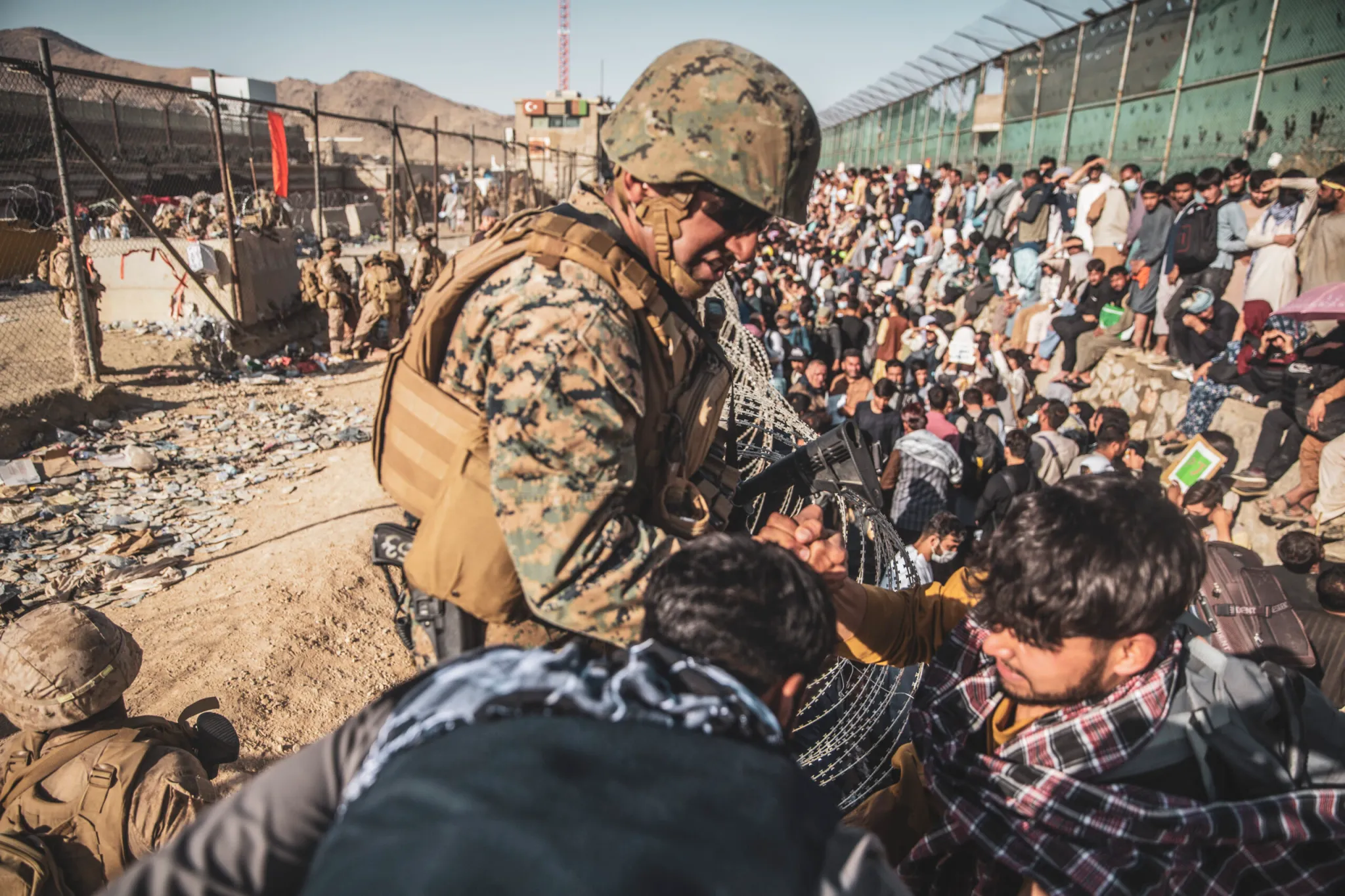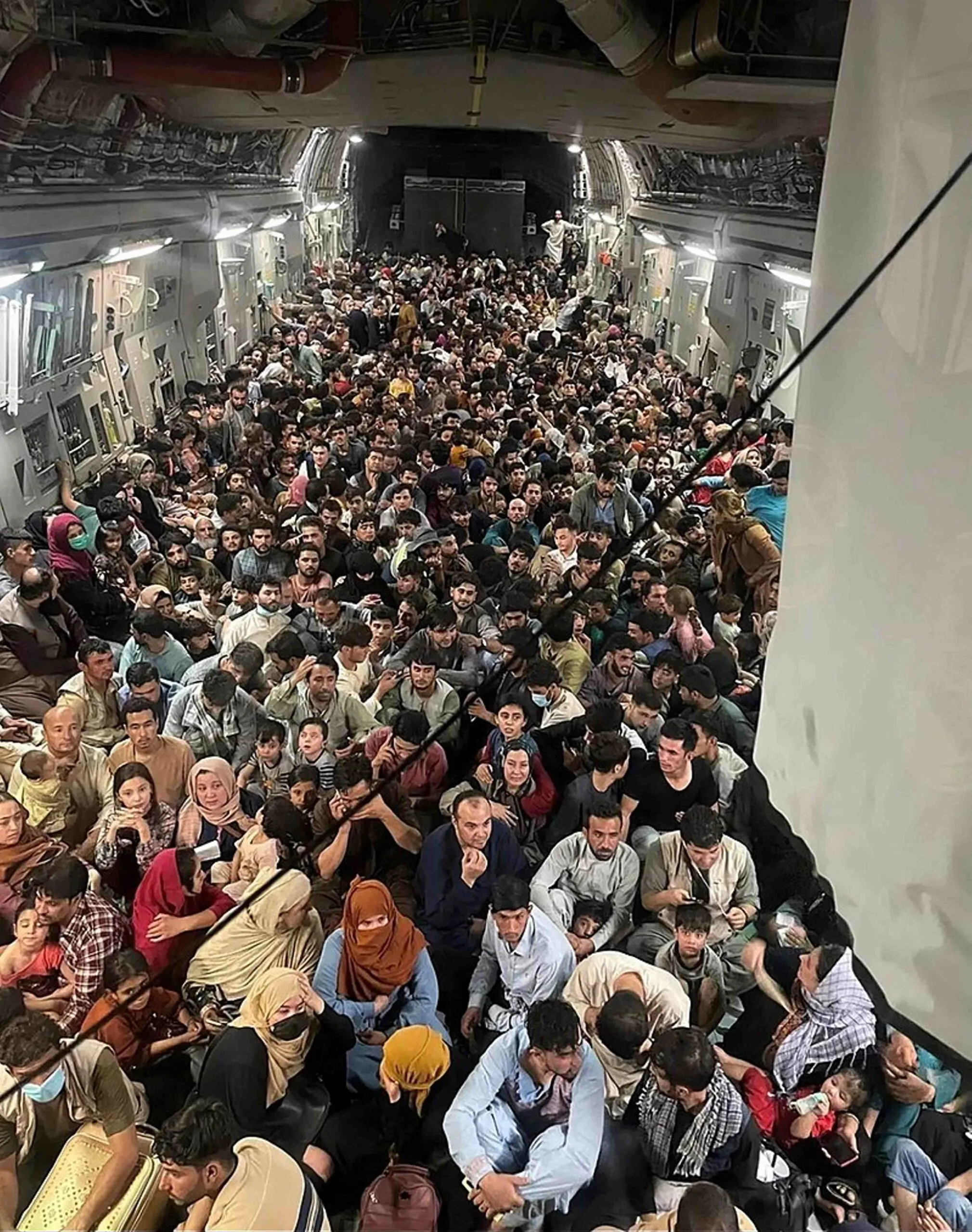

The United States did not properly plan for the chaos of the Afghanistan withdrawal or respond quickly enough as the messiness of the situation became clear, the State Department found.
This week the department released its Afghanistan After Action Review report, its study on the failures and successes surrounding the American withdrawal from the War in Afghanistan. The report blasts both the Trump and Biden administrations, looking at decisions made between January 2020 to August 2021. The withdrawal happened under Biden, but the report calls out the Trump administration’s peace deal with the Taliban as well, showing how two administrations and the American diplomatic presence in Afghanistan did not properly prepare for the effort.
The review “found that during both administrations there was insufficient senior-level consideration of worst-case scenarios and how quickly those might follow” the military withdrawal.
Only 24 pages of the 85-page report have been made public — the rest are classified — but the State Department outlines several ways the United States fell short in its efforts to plan the evacuation of American citizens and local partners. The White House drew on the State Department’s report, as well as a similar Pentagon review released in April, for its own April summary of what went wrong with the withdrawal.
Subscribe to Task & Purpose Today. Get the latest military news and culture in your inbox daily.
The Trump administration negotiated a February 2020 deal with the Taliban, promising to withdraw by May 2021 as part of it, but it did not include any deal between the Taliban and the Afghan government. When the Biden administration took over, a number of elements were still vague, the State Department said. That included how it would meet the deadline, what would happen to Afghans who worked with the U.S. government and what a post-withdrawal State Department presence would look like. Many of those would not be worked out by the time the evacuation happened.
When the Biden administration decided to continue with the Trump administration’s withdrawal plans, the U.S. military initiated its “retrograde” process of stripping away its infrastructure. The military was quick in carrying that out, but as a result it added to the speed in which Afghan security forces started to collapse.

“U.S. officials, however, seemed to rely on received assurances that the Ghani government and its security forces would concentrate on the defense of Kabul and believed that they could hold the Taliban at bay for some time,” the review says.
The review also looked at what contributed to the chaotic and deadly evacuation at Kabul’s Hamid Karzai International Airport in August 2021. One key contributor to the difficulty was the turnover of Bagram Air Base in 2021. As a result, Hamid Karzai International Airport became the one place that the United States could stage an airlift of civilians. After an initial mad scramble, the U.S. and the Taliban reached an agreement to try to make the evacuation smoother, but the limited access and instability outside of HKIA in Kabul meant that “many of those who would have been prioritized for evacuation never made it in before the airlift ended.” It also contributed to the Aug. 26, 2021 incident an ISIS-K suicide bomber attacked Abbey Gate at Hamid Karzai International Airport, killing 13 American service members and at least 150 Afghan civilians, with many more injured.
Ahead of the fall of Kabul, the State Department found that it struggled to fill positions and assess the situation that summer. On-the-ground coordination ended up working better than higher-level planning, in part due to unfilled positions in the State Department and logistical challenges from the COVID-19 pandemic. However the review found that “there may have been no way to prepare fully for the situation once Kabul fell to the Taliban and the NEO morphed into the largest humanitarian evacuation since the fall of Saigon.”

The after-action review found some successes, including the work done by the State Department and military partners to secure resources for those evacuated out of Kabul to nearby countries.
The unclassified pages offer more details into just how many factors were at play during the evacuation. Despite those successes once people were out of Afghanistan, the United States could have been better prepared for an evacuation, the State Department found. One key contributor to the chaos was a wave of phone calls and messages — including from current American legislators, former officials and civilians — that flooded the State Department with requests to help certain Afghan nationals. Those messages “placed Department employees at even greater risk and hindered the effort to move larger groups of people out.”
The State Department, U.S. military and partners were able to evacuate more than 124,000 people during the withdrawal. However, the State Department’s efforts in 2021 were not perfect. The review outlined several areas the department needs to improve on, including planning for worst-case scenarios, like a wild evacuation at an airport.
The latest on Task & Purpose
- The Navy is offering up to $75,000 in enlistment bonuses to get more sailors
- No, military helicopters are not invading California
- No ‘golden hour’? How Army medicine is changing for the next war
- Army fires former 5th SFAB commander following investigation
- Russia’s antique tanks are finding a second life as VBIEDs
